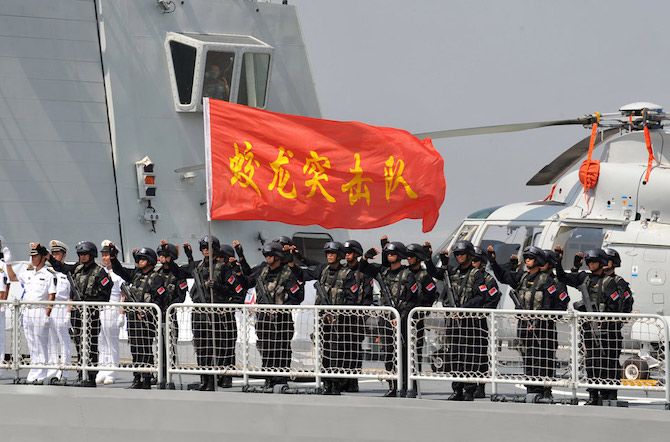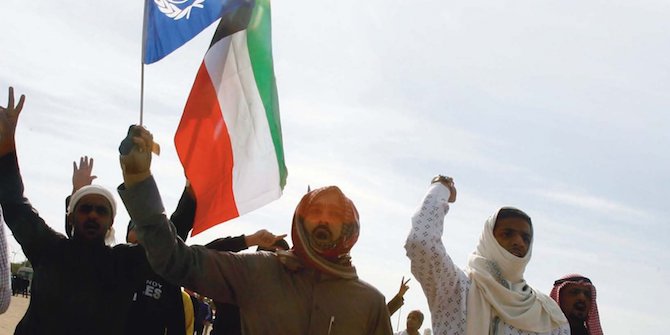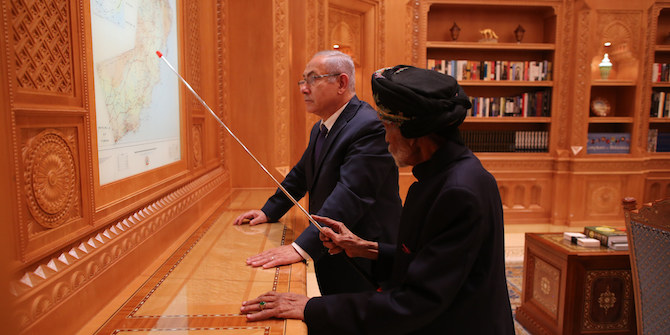by Furqan Khan

From assertive Chinese support for much of the world’s population affected by coronavirus, to an ailing American leadership with reduced stature, the new global pandemic is accelerating the geopolitics of the twenty-first century. In this geopolitical calculation, the United States faces relative decline in terms of demonstrating its responsibility for global leadership. China, after seemingly having defeated the virus at home, is feeling emboldened to transform itself from the sick man of Asia to the global saviour.
However, the pandemic and relative responses from Beijing and Washington show that geopolitics and embedded power relations are not water-tight categories, but are rather subject to externally wrought transformations – in this case, via COVID-19. A geopolitical shift is more visibly evident in the Persian Gulf. The region’s geopolitics revolve around local rivalries; fuelled by internal violence and amplified by the conflicting interests of the great powers.
Besides becoming a catalyst for geopolitical change, COVID-19 is bridging China and the Persian Gulf through the ‘Health Silk Road’, encompassing collaboration in combating the virus as a common enemy. The expression is Chinese President Xi Jinping’s, highlighting China’s support to a large portion of the global population in America, Europe, Africa and Asia.
In this context, China is extending its support to Saudi Arabia, UAE and Iran to fight COVID-19. However, is growing Chinese assertiveness regarding the COVID-19 crisis simply a humanitarian concern or a strategic push to advance its broader interests in the oil-rich region? And is China’s strategic ingress going to challenge US pre-eminence in the region?
For the last two decades, China has carefully calibrated its foreign policy to expand its political, economic and military clout. The coronavirus outbreak has cultivated the conditions for its newly won pre-eminence, complemented by US President Trump’s broad rejection of engagement, even with erstwhile allies in Europe and elsewhere.
China’s ambivalent approach towards the Persian Gulf has kept Beijing from involvement in regional conflicts, including the rivalry between Iran and Saudi Arabia. Whether through criticism of the US sanctions against Iran or a growing bonhomie with Riyadh, Beijing remains cautious to adjust its interests in the region with the world’s largest energy reserves to consolidate its position.
Currently, China is the world’s largest importer of oil and natural gas. In 2018, around half (43 percent) of its oil imports were from the Persian Gulf. Therefore, the recent cooperation in combating COVID-19 serves Beijing’s objectives of asserting its increasing influence as a necessary requirement to preserve global energy interests in the Gulf. However, the crisis is a catalyst for an even larger degree of political and strategic transformations in the Middle East.
Washington, on the other hand, not only wasted time criticising Beijing for producing the ‘Chinese Virus’ but also impeded the global fight against COVID-19 by withholding its share of funds for the World Health Organisation (WHO). Standing as the worst-hit country worldwide, the US under President Trump has been focusing ever more inward, with vital geopolitical hotspots including the Persian Gulf falling to an assertive China.
Wary of this growing Chinese presence in the Persian Gulf, as in East and Southeast Asia and Europe, the US suspects Beijing’s activities of threatening its strategic interests in the region. Besides the sale of Chinese Intermediate-Range Ballistic Missiles (IRBMs) such as DF-3A and DF-21 to Riyadh, Washington felt the heat when China conducted Blue Sword joint military drills with Saudi Arabia, the US’ main Gulf ally, in November 2019.
On the other hand, a Defence Intelligence Agency (DIA) report in 2019 warned Washington of possible Chinese weapon sales to Tehran, including fighter jets and tanks. More irritating for the American foreign policy establishment is Beijing’s continued oil imports from Iran and complete disregard for the US’ unilateral sanctions following Washington’s withdrawal from the Joint Comprehensive Plan of Action (JCPOA) in May 2018. Even European allies remain at odds with the US on its ‘Maximum Pressure’ approach towards Iran, which has hobbled US influence in the Persian Gulf. With minimum impact and lack of support from its European allies, the strategy may well prove a major geopolitical blunder for the US.
Amid the COVID-19 crisis in the region, the Gulf is yielding to the renewed geopolitical landscape, with Saudi Arabia close to abandoning its war in Yemen while the UAE, a major rival of Tehran in the GCC, surprisingly leads the medical support for Iran.
These developments could be proactive measures against the anticipated drop in oil prices for the GCC amid COVID-19. However, the declining US willingness, or perhaps ability, to demonstrate its regional responsibility and security commitments paints a sorry picture of any US pre-eminence that previously existed in the Persian Gulf. This was evident last year when Trump called on states to protect their own shipping in the Persian Gulf, the US fifth fleet’s primary zone of responsibility.
Hence, US negligence of its role and the bullying of its allies in the Gulf, a resulting loss in confidence from its regional allies, and the counter-productive handling of Iraq since 2003 reflects a broader strategic shift in behaviour of US allies in favour of a greater Chinese role in the Persian Gulf.
Therefore, it seems renewed Chinese assertiveness in terms of handling fierce criticism with its ‘COVID diplomacy’, a strategic ingress under the guise of technical support against COVID-19 and more broadly, its gradual demonstration as a strategic alternative to the United States in the Persian Gulf are the geopolitical realities rendered by the COVID-19 crisis.
The outbreak has provided China’ with a strategic opportunity to show its ability as a mature superpower capable of handling a global crisis, where even the hence sole global hegemon has failed to respond. Secondly, the pandemic has stripped the US of its privileged influence in vital geopolitical hotspots and has highlighted its receding ability to simultaneously concentrate on dealing with domestic crises and fulfil its global responsibilities. Finally, the US’ negligence and strategic irrelevance under the Trump administration has created a power vacuum where the balance may tilt towards China as the new alternative to the ailing US in the Persian Gulf.






Very insightful and and incisive information, Mr. Furqan Khan.
Good article. The US is certainly withdrawing as patrolling the whole world is becoming too expensive and only increases their already huge debt. This will not change even if Biden wins the elections, as he does not seem to have a strategy to China has apparently managed the COVID crisis really well and is ready to purchase new assets.
This article is very well written and shows the geographical changes amid Covid 19 and its regional effects. So a very helpful and analyzed